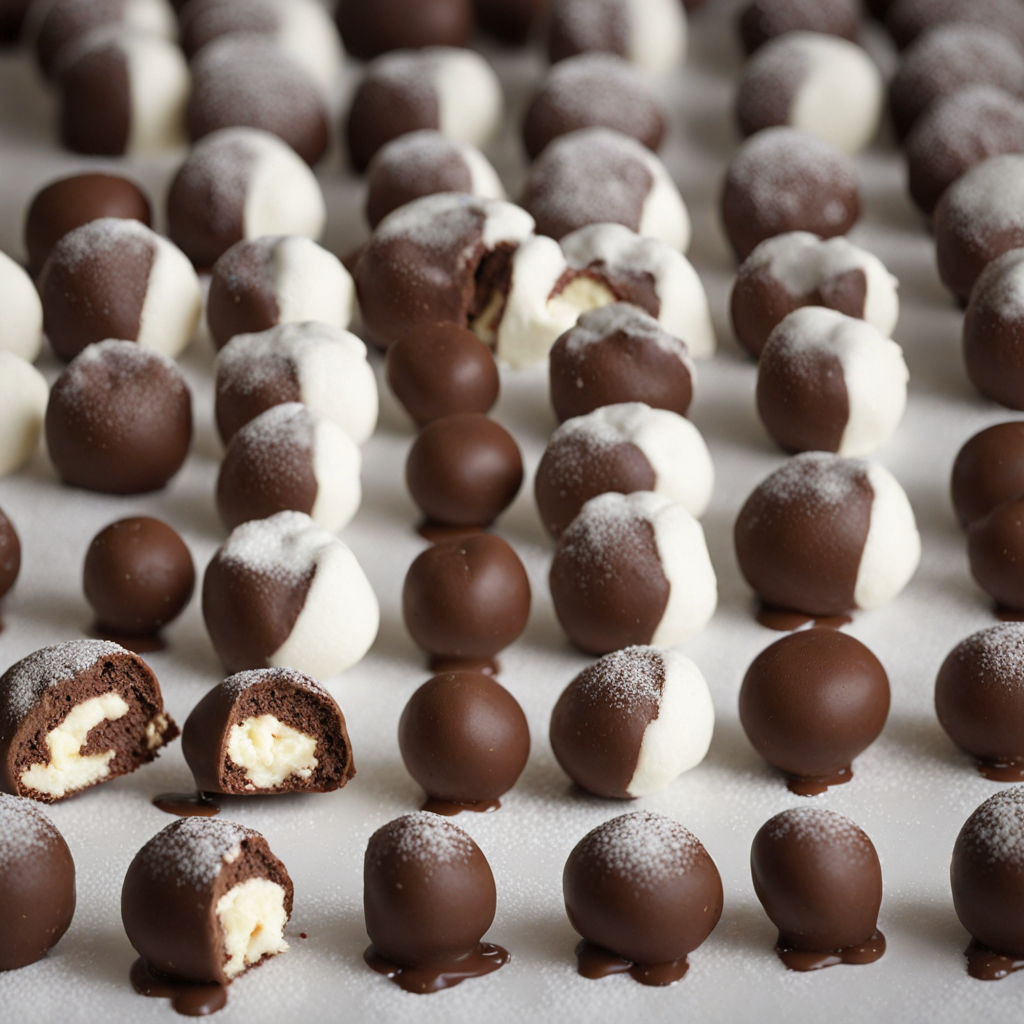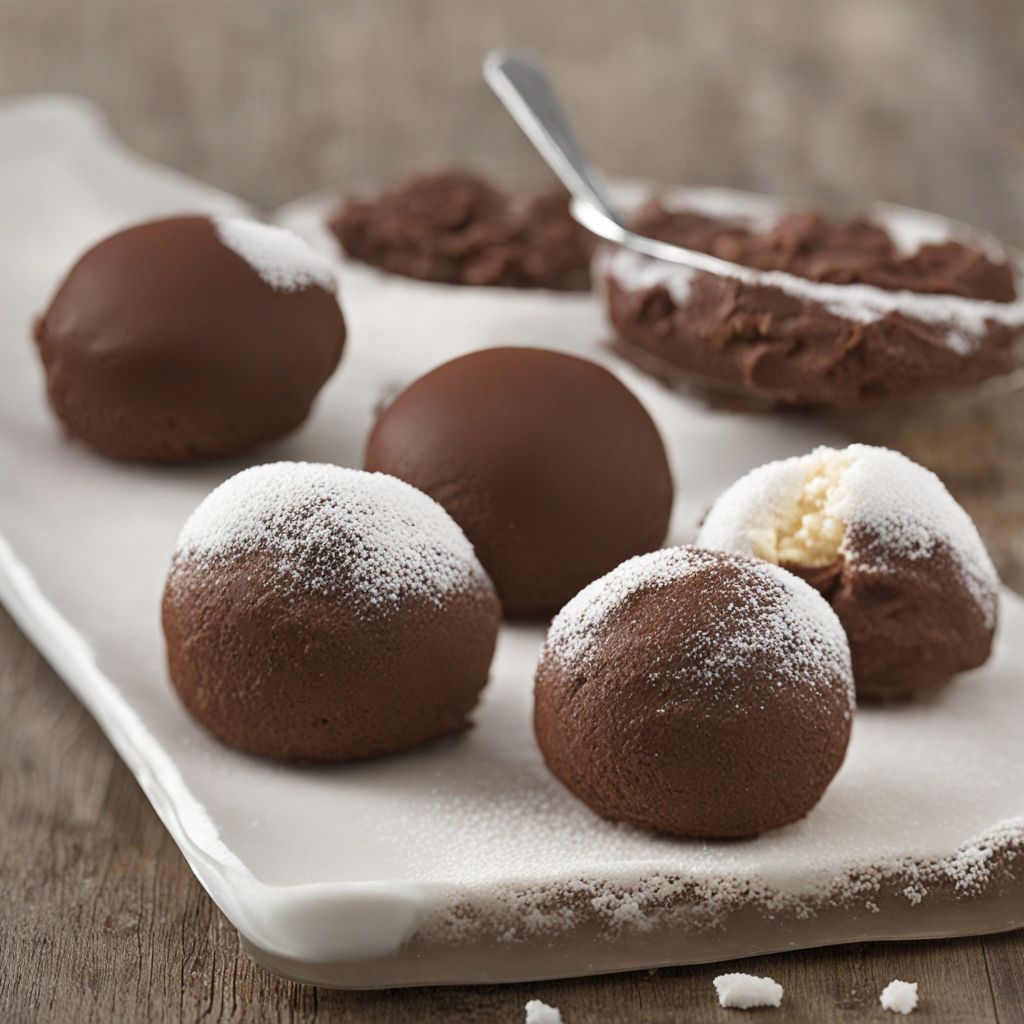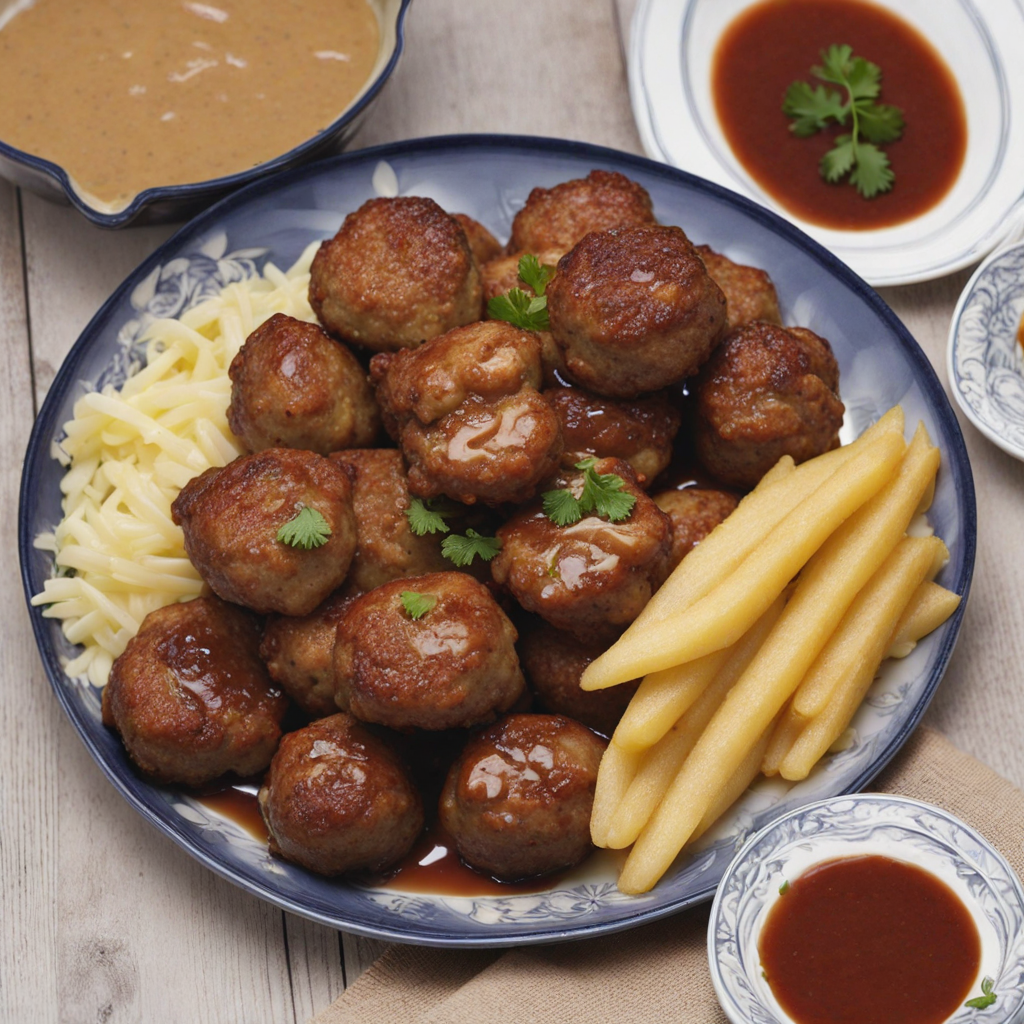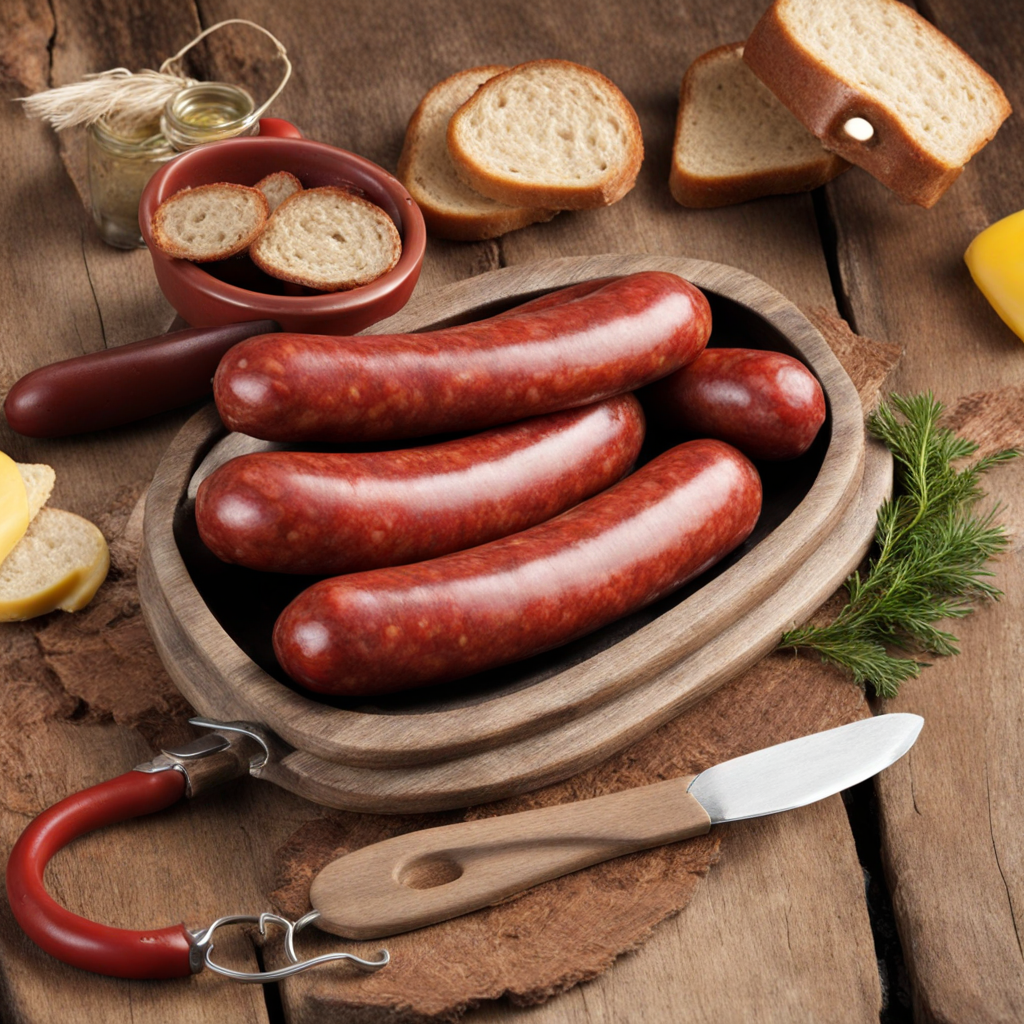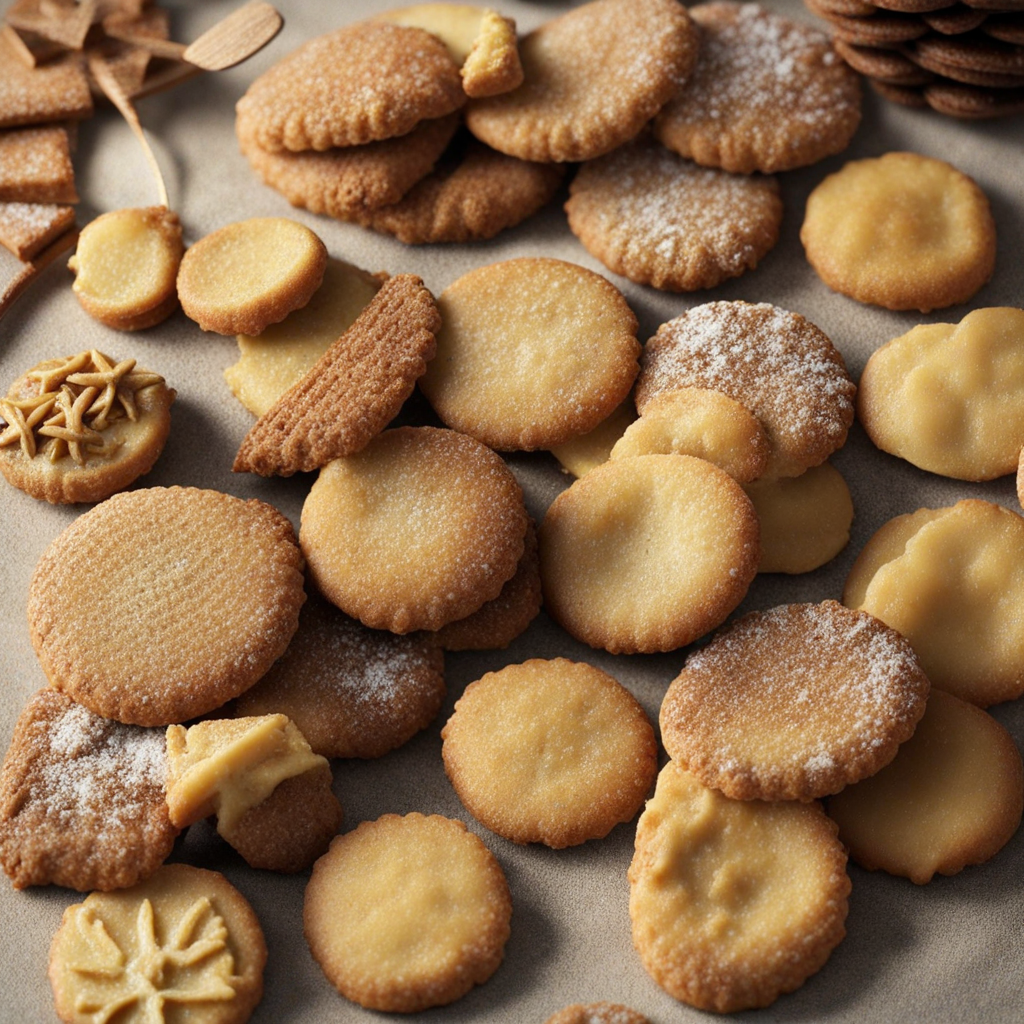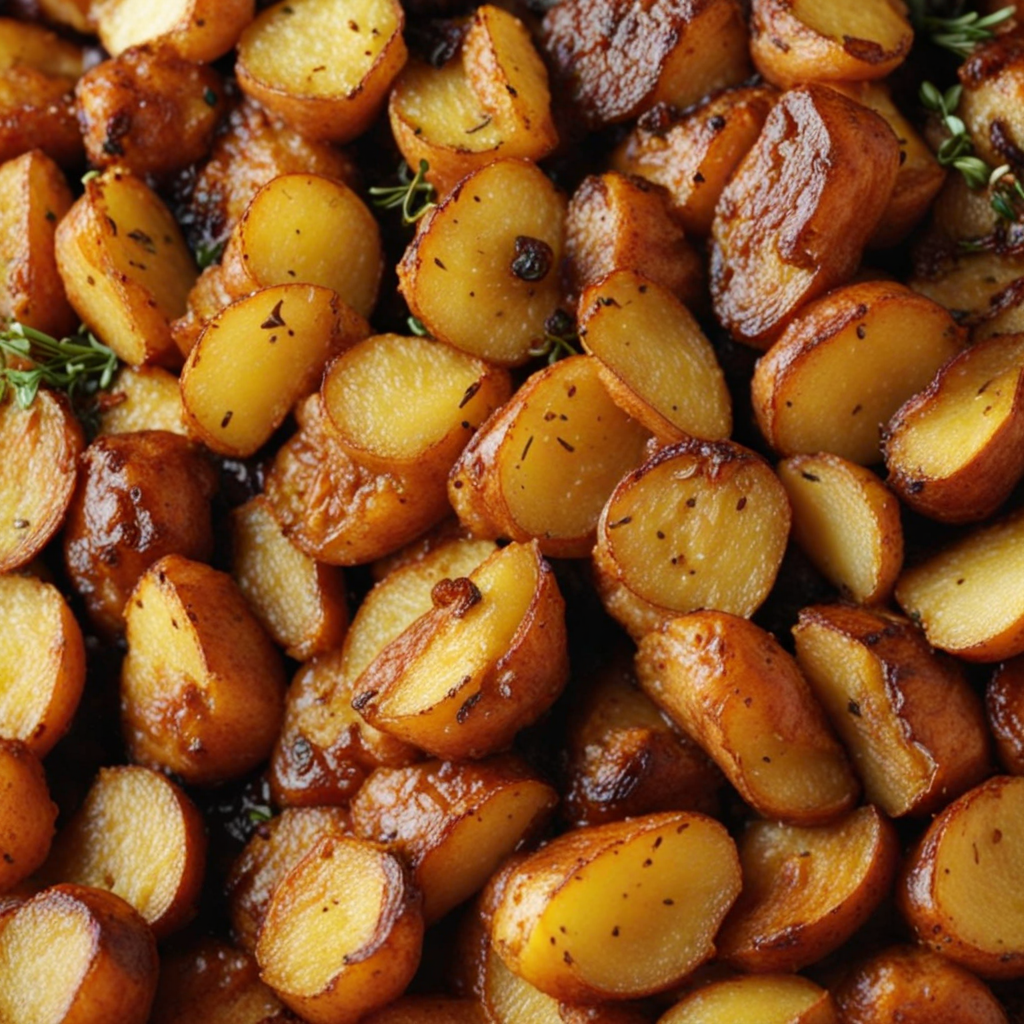Flødeboller
Flødeboller, often referred to as "Danish chocolate-covered marshmallow treats," are a delightful confection that embodies the essence of Danish sweetness. At their core, these delectable bites feature a soft, airy base, typically made from a layer of crisp meringue or a thin biscuit. This foundation provides a satisfying crunch that contrasts beautifully with the velvety marshmallow topping, which is often flavored with vanilla or a hint of berry. The fluffy meringue is piped onto the base in a generous swirl, creating an inviting, cloud-like appearance that tempts anyone with a sweet tooth. What truly sets Flødeboller apart is the rich chocolate coating that envelops the marshmallow topping. This layer of chocolate can be dark, milk, or even white, depending on the recipe or personal preference. As you take a bite, the chocolate cracks easily, releasing the soft marshmallow and revealing the crisp base underneath. Each flavor combination can be enhanced with various toppings, such as shredded coconut, crushed nuts, or sprinkles, adding an extra dimension to the indulgent experience. Flødeboller are not just a treat; they are a celebration of texture and flavor that can be enjoyed at any time of day. Traditionally served at cafés and bakeries across Denmark, these sweet morsels have become a beloved part of Danish culture. They are often enjoyed with coffee or tea, making them the perfect companion for a cozy afternoon break. Whether you’re savoring a classic version or a modern twist, Flødeboller offer a unique taste of Denmark that is sure to delight your palate and leave you craving more.
How It Became This Dish
Flødeboller: A Sweet Journey Through Danish History Flødeboller, often whimsically referred to as "cream balls," are a beloved confection from Denmark that has delighted palates for centuries. This delightful treat, consisting of a light meringue or cream layer atop a biscuit base, coated in chocolate, has deep roots in Danish culture, reflecting the nation’s culinary evolution and social customs. #### Origins: The Birth of Flødeboller The exact origins of flødeboller are somewhat murky, but they are believed to have emerged in the early 19th century. The name "flødeboller" itself translates to "cream balls," which hints at the decadent nature of the treat. The earliest references to something resembling flødeboller can be traced back to the European tradition of meringue confections, which gained popularity during the late 18th century. Flødeboller likely drew inspiration from French culinary practices. During this time, Denmark was influenced by the broader European trend of pastry-making, which included the introduction of whipped egg whites and sugar to create light, airy desserts. The Danes adapted these techniques to create their own unique variations, leading to the flødeboller we know today. #### Cultural Significance: More Than Just a Treat Flødeboller holds a special place in Danish culture, serving as both a nostalgic treat and a symbol of Danish hospitality. Traditionally, these confections are enjoyed during festive occasions, family gatherings, and celebrations. The act of sharing flødeboller is often seen as a gesture of goodwill, reinforcing social bonds and community ties. In Denmark, flødeboller are not just a sweet snack; they are intricately woven into the fabric of Danish traditions. They often appear during holidays, such as Christmas and Easter, where they are served alongside other festive foods. The treat also plays a role in the Danish concept of "hygge," which emphasizes coziness, comfort, and togetherness. Enjoying flødeboller with coffee or hot chocolate is a quintessentially "hygge" experience, epitomizing warmth and conviviality. #### Development Over Time: A Culinary Evolution As Danish culinary practices evolved, so too did flødeboller. The 20th century marked a significant turning point in the confection's development. With the rise of industrialization, flødeboller became more accessible to the general populace. Bakeries across Denmark began to produce flødeboller on a larger scale, leading to variations in size, flavor, and presentation. In the mid-20th century, flødeboller saw a surge in popularity, becoming a staple in Danish homes. They were often made using simple ingredients like marzipan, chocolate, and various toppings, reflecting the Danish preference for wholesome, locally sourced materials. Families began experimenting with different flavors and toppings, leading to the creation of variations such as fruit-flavored creams, nuts, and even candy toppings. The 1970s and 1980s ushered in an era of innovation, where artisanal bakeries began to pop up, offering gourmet versions of flødeboller. This period saw a resurgence in interest in traditional Danish recipes and a shift towards high-quality ingredients. Bakers experimented with organic chocolates, locally sourced dairy, and creative flavor combinations, leading to the emergence of flødeboller as a gourmet dessert. #### Modern Day: A Flødeboller Renaissance In recent years, flødeboller have experienced a renaissance, both in Denmark and internationally. The rise of social media has played a significant role in this revival, allowing bakers and confectioners to showcase their creations to a global audience. Flødeboller are often featured in food blogs and Instagram feeds, drawing the attention of food enthusiasts and inspiring a new generation to appreciate this classic Danish treat. Today, flødeboller come in a variety of forms, from traditional to modern interpretations. Gourmet versions may incorporate exotic flavors such as matcha, salted caramel, or even lavender, all while maintaining the foundational elements of the treat. Bakeries now offer a plethora of fillings, including raspberry, passion fruit, and even whiskey-infused ganache, demonstrating the versatility of the flødeboller. Moreover, the rise of dietary preferences and restrictions has led to the development of vegan and gluten-free flødeboller, ensuring that everyone can indulge in this delightful treat. The creativity and innovation displayed by contemporary bakers continue to keep flødeboller relevant in the ever-evolving culinary landscape. #### Flødeboller in the Global Context While flødeboller are deeply rooted in Danish culture, their appeal has transcended borders. Internationally, they are often compared to similar confections, such as the French "pavé" or the Italian "zeppole." However, the unique combination of flavors and textures in flødeboller sets them apart, allowing them to carve out a niche in the global dessert scene. In Denmark, flødeboller are now not only enjoyed in homes and bakeries but also feature in gourmet food festivals and events. They have become a point of pride for many Danes, symbolizing their culinary heritage while embracing modern trends. #### Conclusion: The Enduring Legacy of Flødeboller Flødeboller is more than just a sweet indulgence; it is a representation of Denmark's rich culinary history and cultural identity. From its humble beginnings rooted in European influences to its current status as a gourmet treat, flødeboller has successfully navigated the tides of change while remaining true to its essence. As food continues to evolve and adapt to contemporary tastes, flødeboller stands as a testament to the enduring power of tradition and innovation. Whether enjoyed at a family gathering, a local bakery, or as part of a global culinary adventure, flødeboller will undoubtedly remain a cherished part of Danish culture for generations to come, inviting everyone to savor a bit of Danish sweetness.
You may like
Discover local flavors from Denmark


